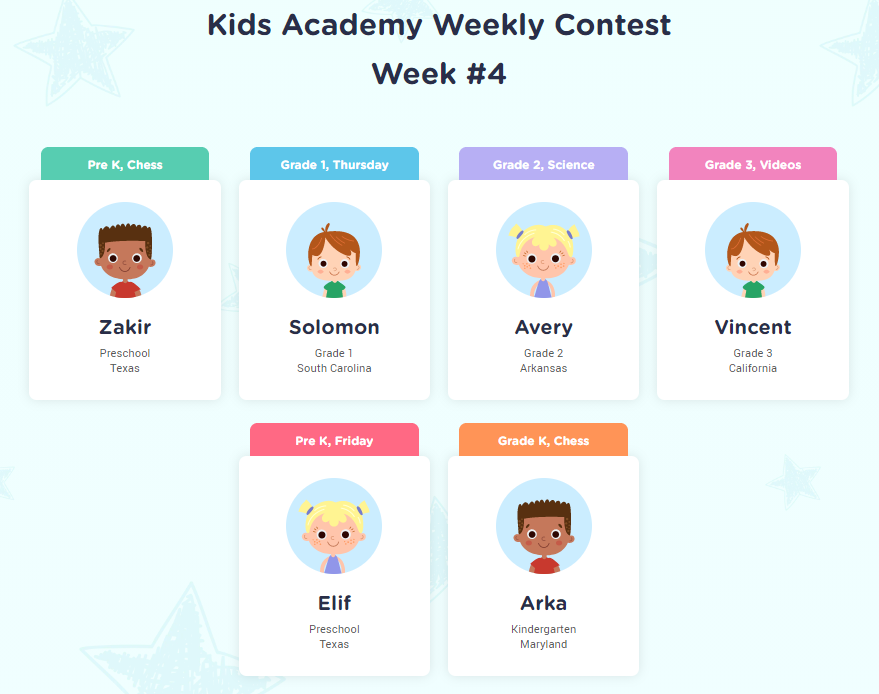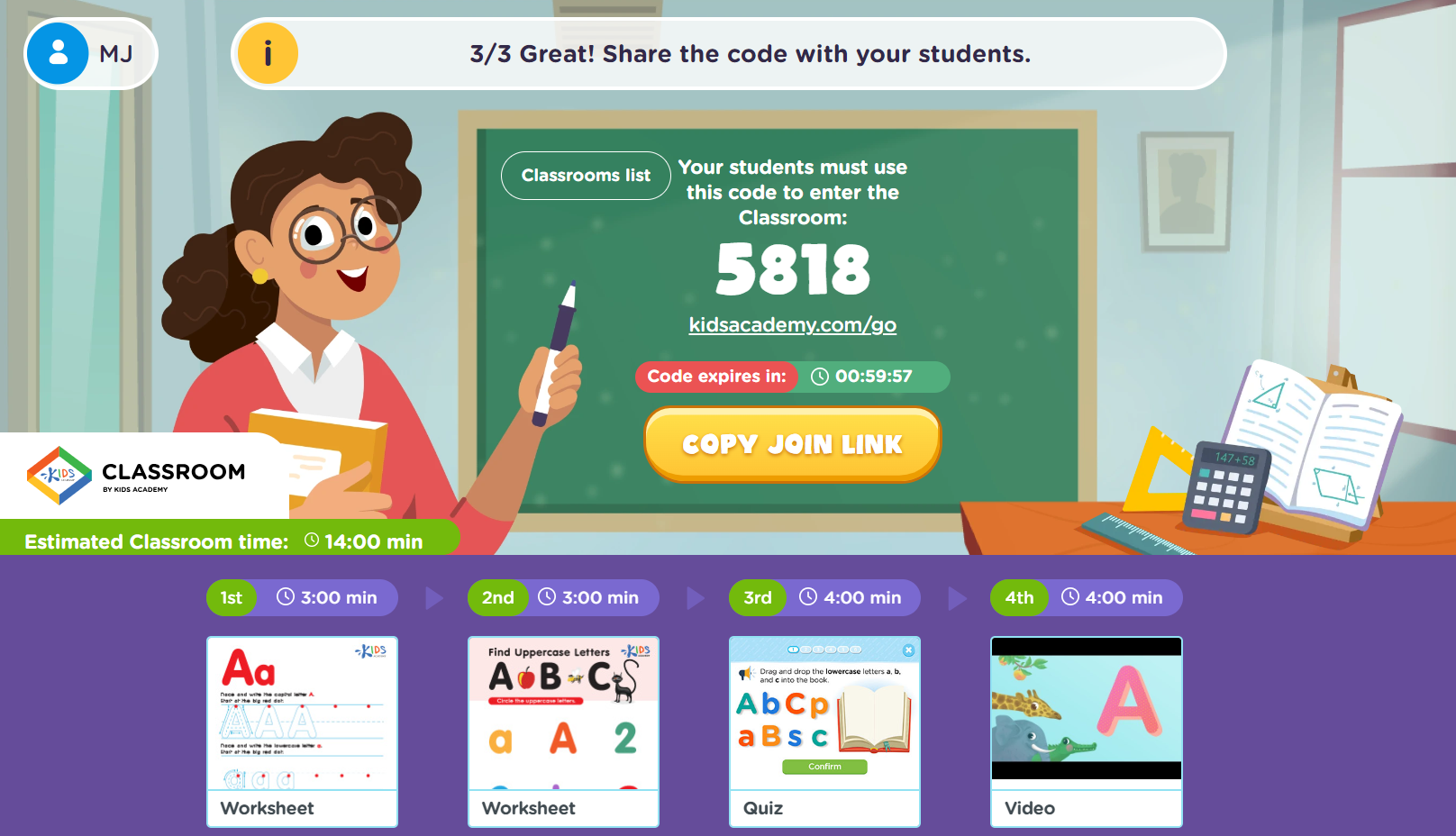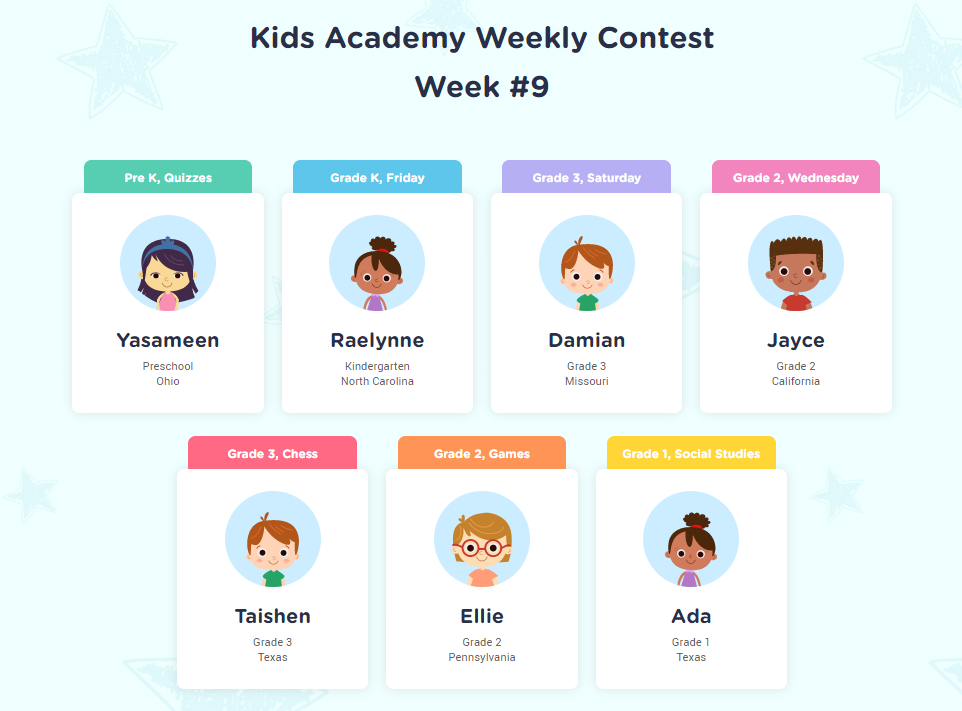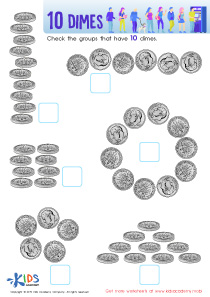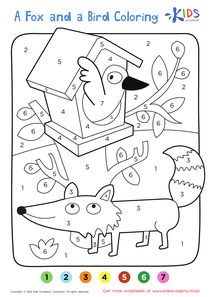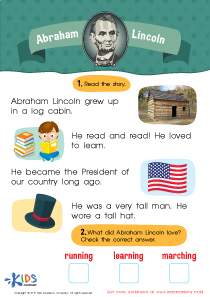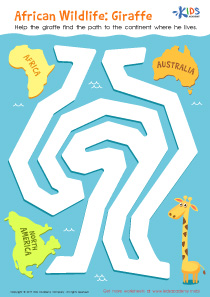1.NBT.C.4 Number and Operations in Base Ten worksheets With Answers for Grade 1
41 filtered results
Difficulty Level
Grade
Age
-
From - To
Subject
Activity
Standards
Favorites
With answer key
Interactive
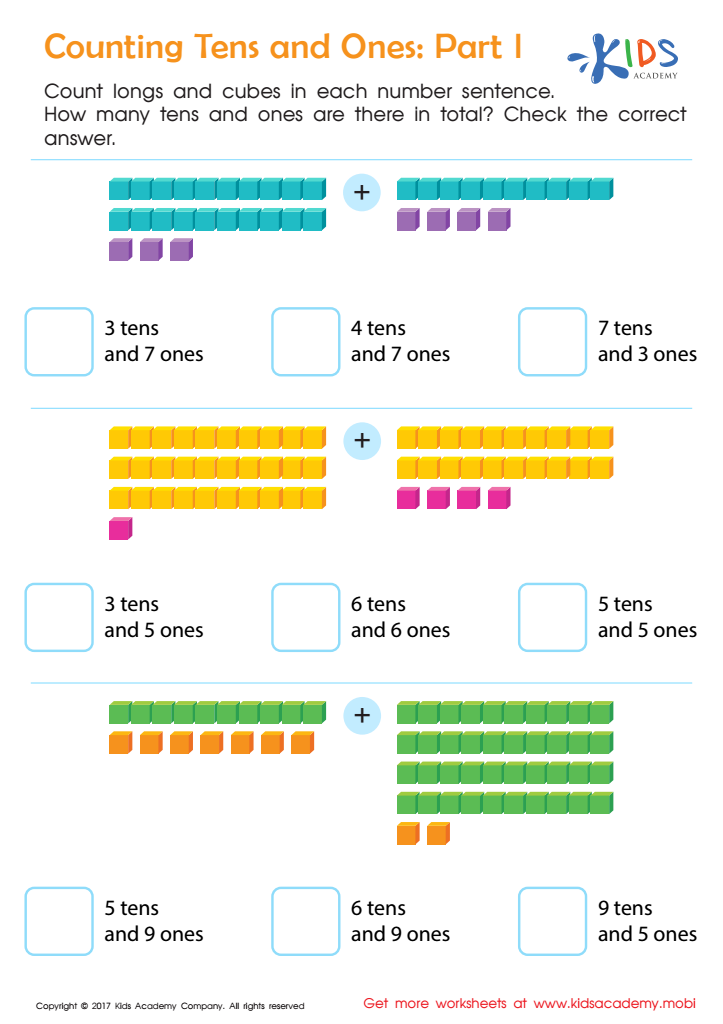

Counting Tens and Ones: Part 1 Worksheet
Kids Academy has a great place value worksheet to help kids learn when they don't have manipulatives at home! It includes longs and cubes that kids can count and add to find the sum. Colorful and downloadable, this page will help kids understand addition and place value better. Give it a try!
Counting Tens and Ones: Part 1 Worksheet
Worksheet
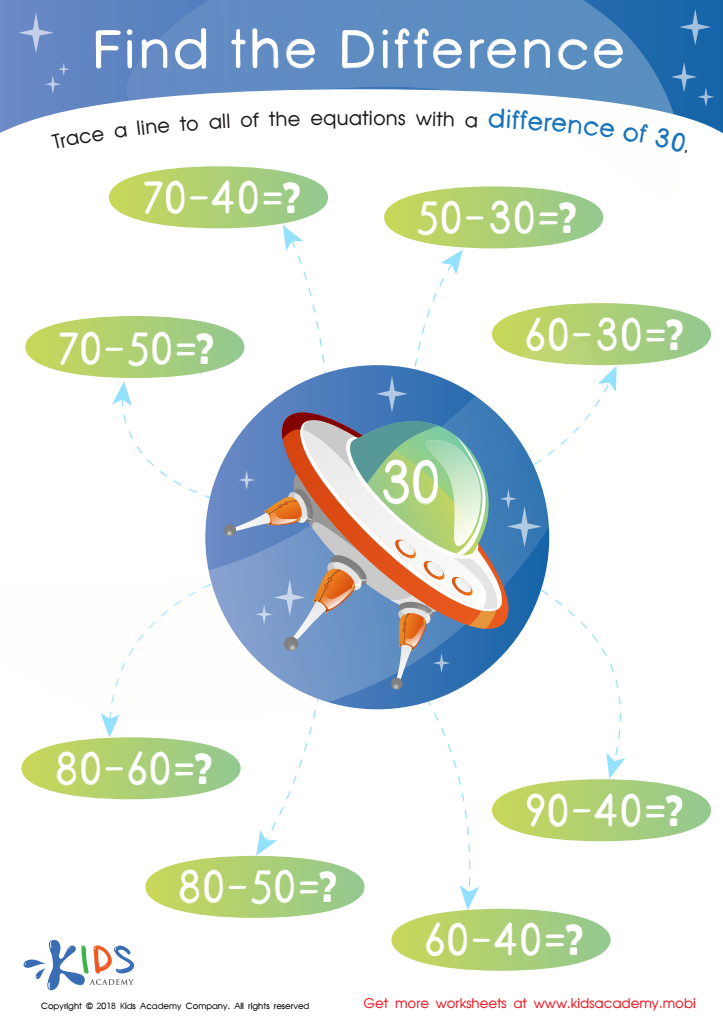

Find The Difference Worksheet
Kindergarteners need to work out subtraction problems and get the right answers. To help them, point to the alien ship with '30' in it on the worksheet. Get them to follow a line to the equations with a difference of 30. Solving these simple subtraction problems will give the answers.
Find The Difference Worksheet
Worksheet
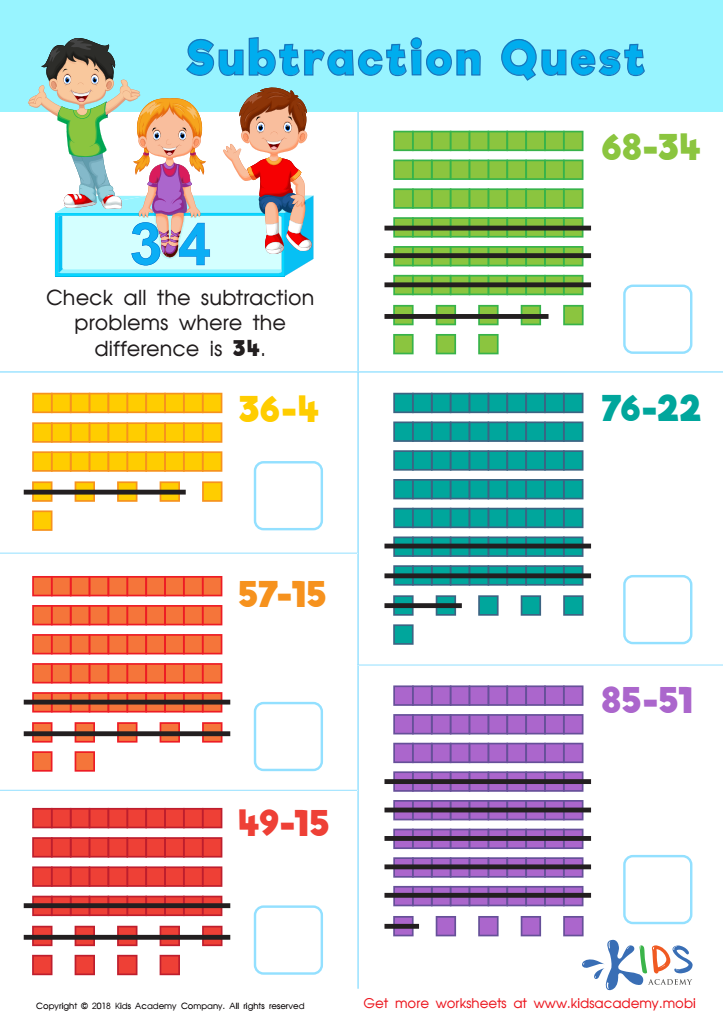

Subtraction Quest Worksheet
Send your little mathematicians on a quest full of fun! This free, downloadable PDF worksheet has them using base ten blocks to decide if the difference in each problem is 34. They'll solve each problem, marking equations where the difference is 34. It's a great way to build number sense and challenge themselves - plus, they won't even realize it's math!
Subtraction Quest Worksheet
Worksheet
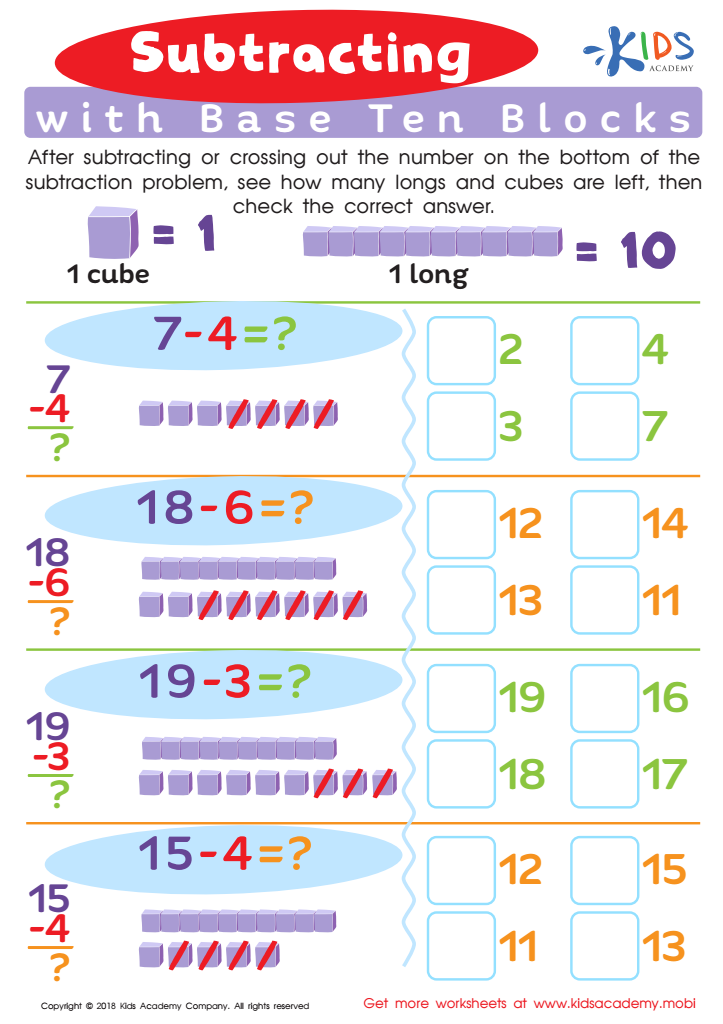

Subtracting With Base 10 Blocks Worksheet
Ask your child to count the cubes then help them check the answer. This problem may seem tricky, but it's just basic math. If they can count, they should have no trouble completing the exercise.
Subtracting With Base 10 Blocks Worksheet
Worksheet


Turn Around Dominos Worksheet
Encourage your child to flex their mental muscles with this math worksheet. Look through the left side's dominos and their values and then check the three boxes on the right. Ask your child if any of the right box's dominos are similar. This requires focus and careful observation.
Turn Around Dominos Worksheet
Worksheet
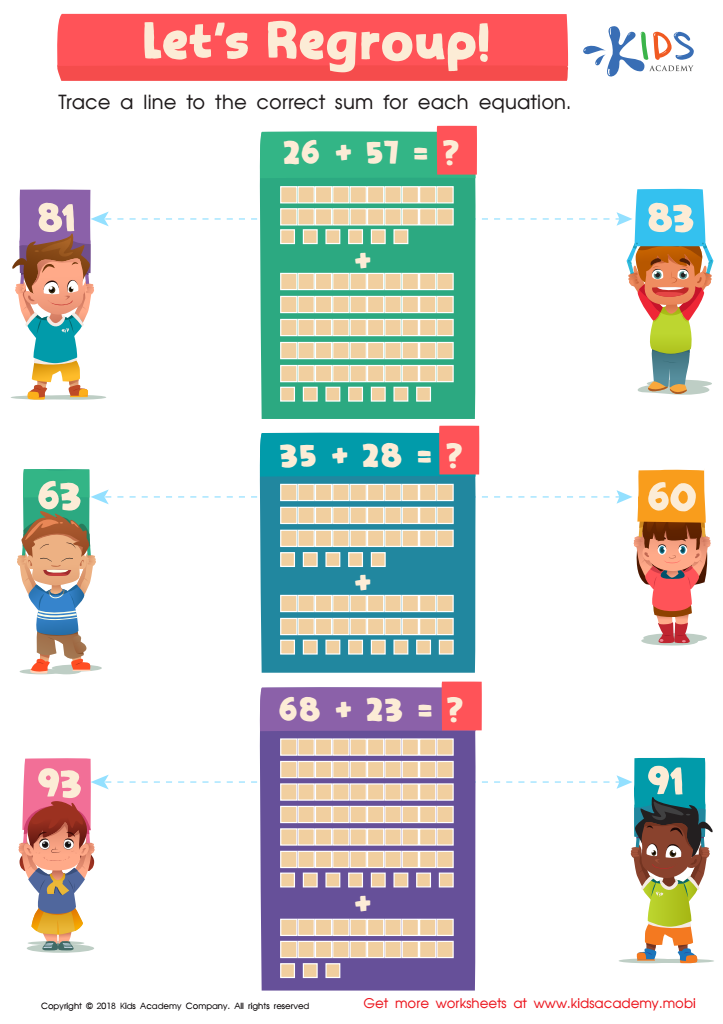

Let's Regroup Worksheet
Counting is fun! Help teach your child with fun, colorful worksheets like this one. For simple sum-adding or counting high numbers, this printout helps them master the problems. Three equations with numbers are at the top. Guide your child to find the correct answer, then draw a line to the sum for each equation.
Let's Regroup Worksheet
Worksheet
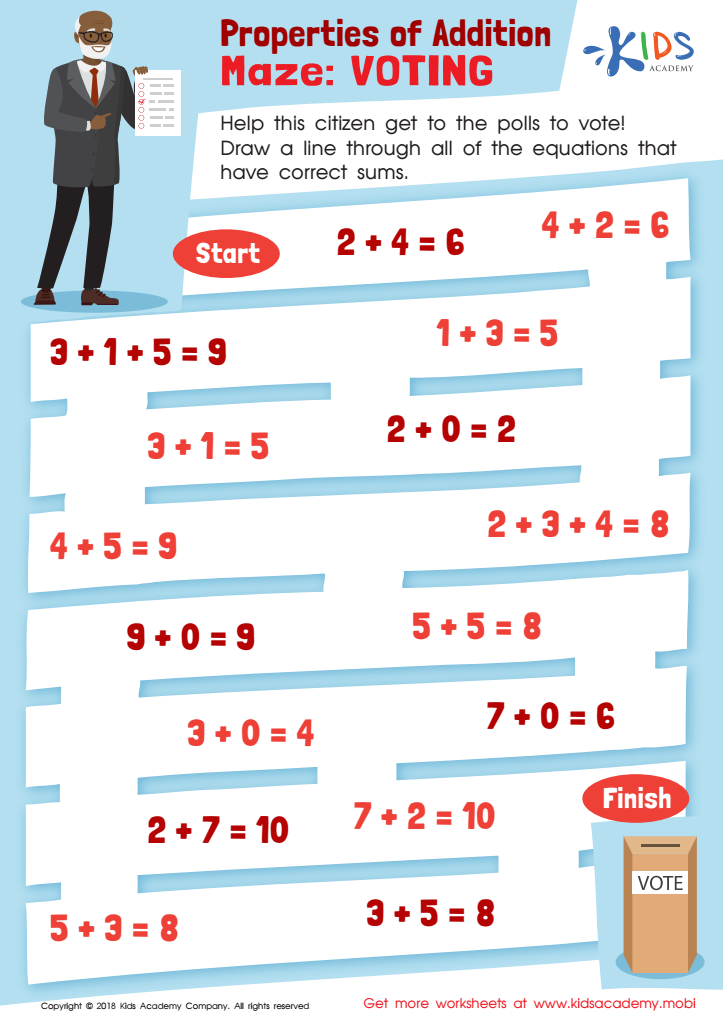

Properties of Addition Maze: Voting Worksheet
The good citizen in the worksheet needs your child's help to vote. Ask them to draw a line through all equations with correct sums to get the citizen to the polls. Voting is the right and obligation of all good citizens. It helps elect the right candidates and exercise legal rights.
Properties of Addition Maze: Voting Worksheet
Worksheet
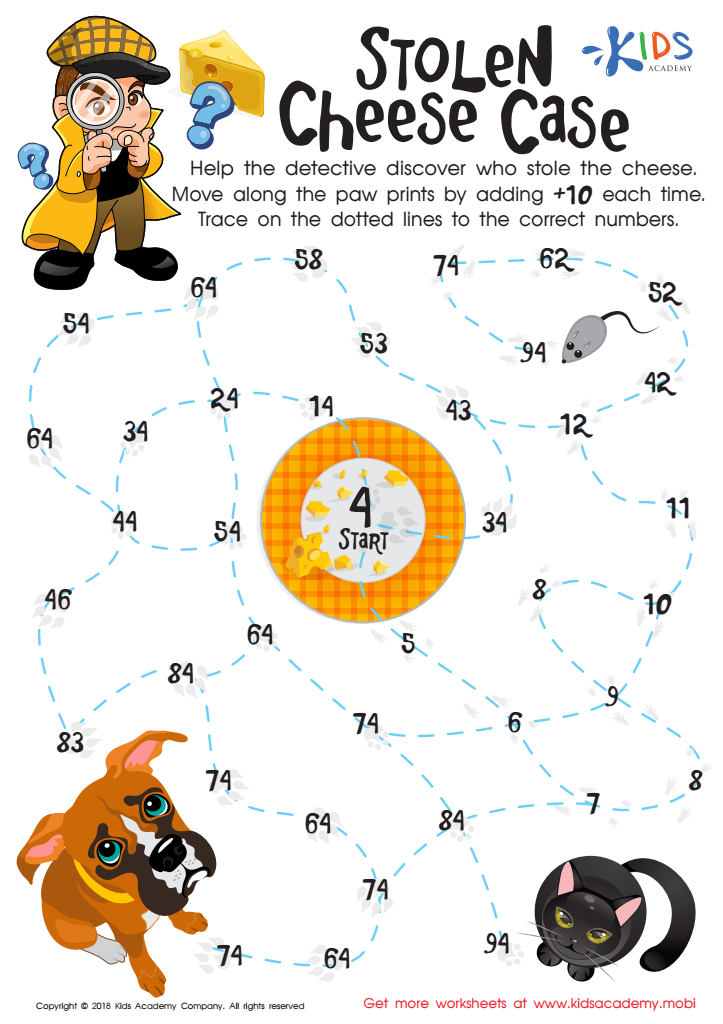

Stolen Cheese Case Maze Worksheet
Someone has stolen the cheese! Can your mathematician detective figure out who it is? Was it the dog, cat or mouse? Have them use traceable lines to skip count by 10 on this free PDF worksheet to solve the case. They'll be having fun and developing their skip-counting strategy at the same time!
Stolen Cheese Case Maze Worksheet
Worksheet
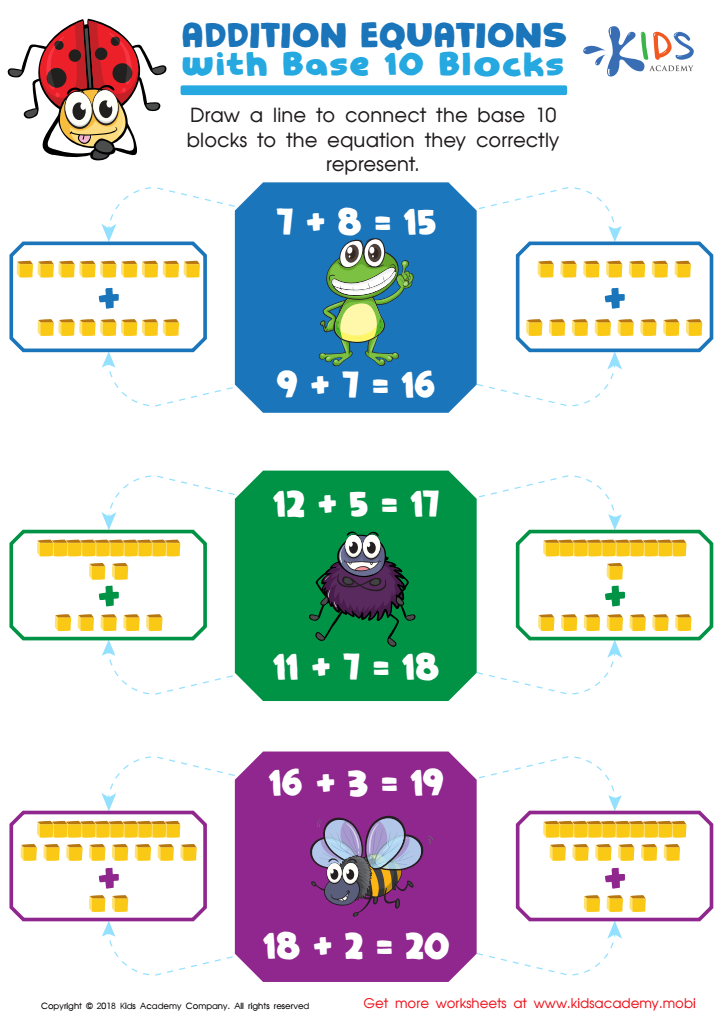

Addition Equations With Base 10 Blocks Worksheet
If your students are struggling with base 10 addition, this worksheet is here to help. Guide them with connecting the blocks to the equation with a line. It's a fun and colourful way to encourage learning.
Addition Equations With Base 10 Blocks Worksheet
Worksheet
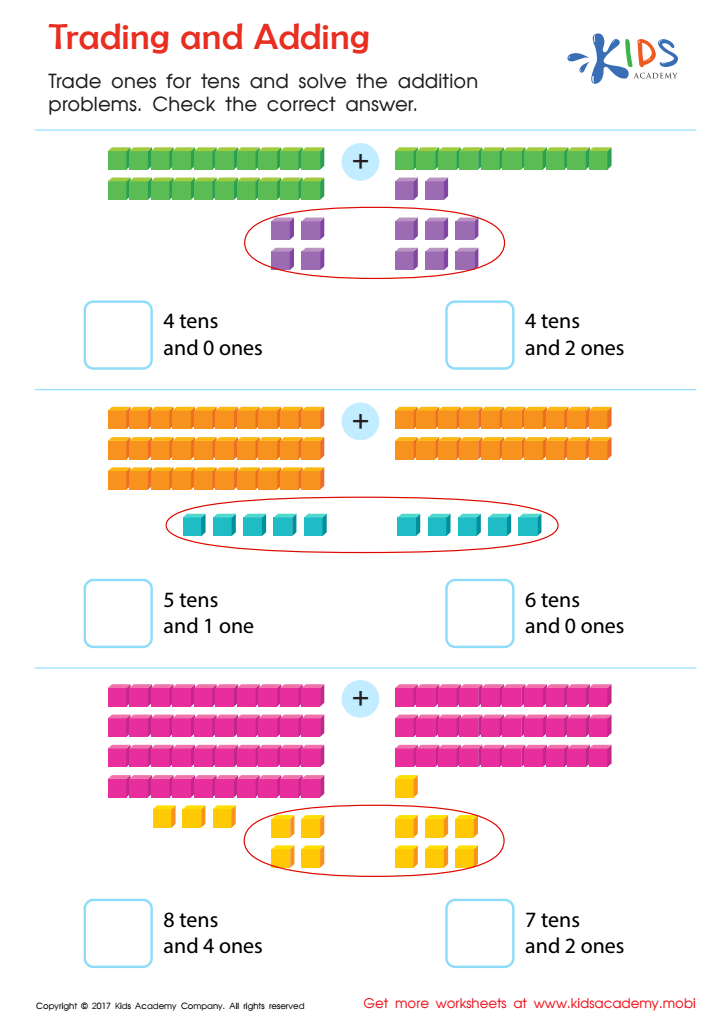

Trading and Adding Worksheet
Help your child learn place value and addition with this free worksheet! Colorful base blocks let them understand the concept of trading ones for tens. Count the blocks on either side of the equation, add, and if there are ten or more ones, regroup them to make tens. Check the answer to complete the page and take your child's learning to the next level!
Trading and Adding Worksheet
Worksheet
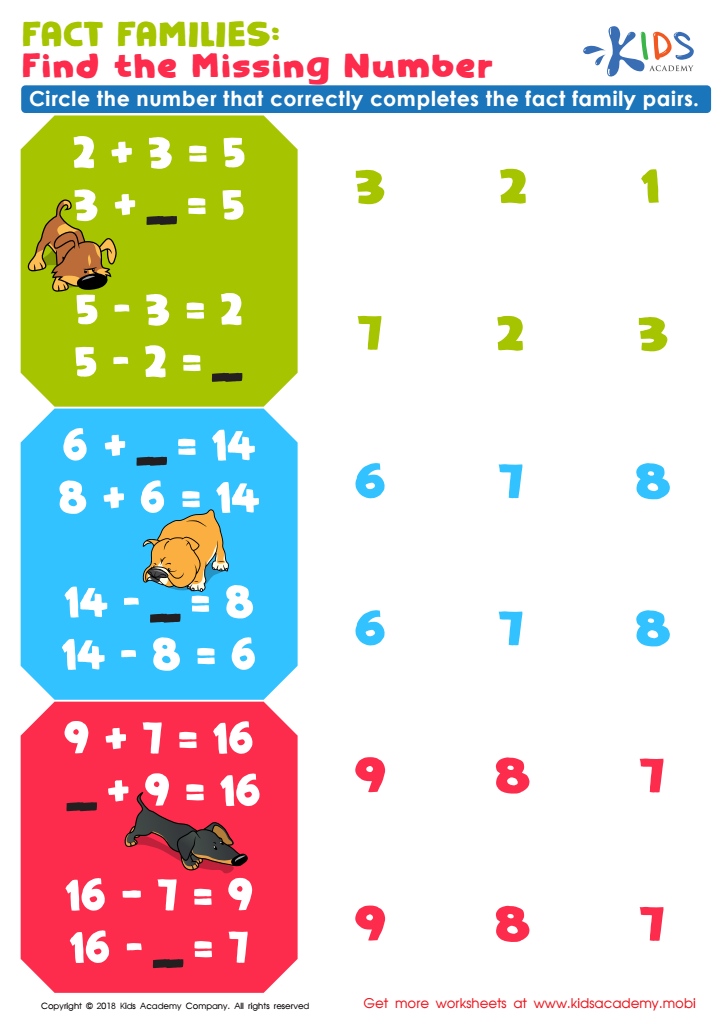

Fact Families: Find Missing Number Worksheet
Assess your student's addition and subtraction knowledge with this worksheet exercise. Task them to identify missing numbers in the fact families and circle the number that completes the pair. Strengthen their reasoning skills and enhance their math concepts.
Fact Families: Find Missing Number Worksheet
Worksheet
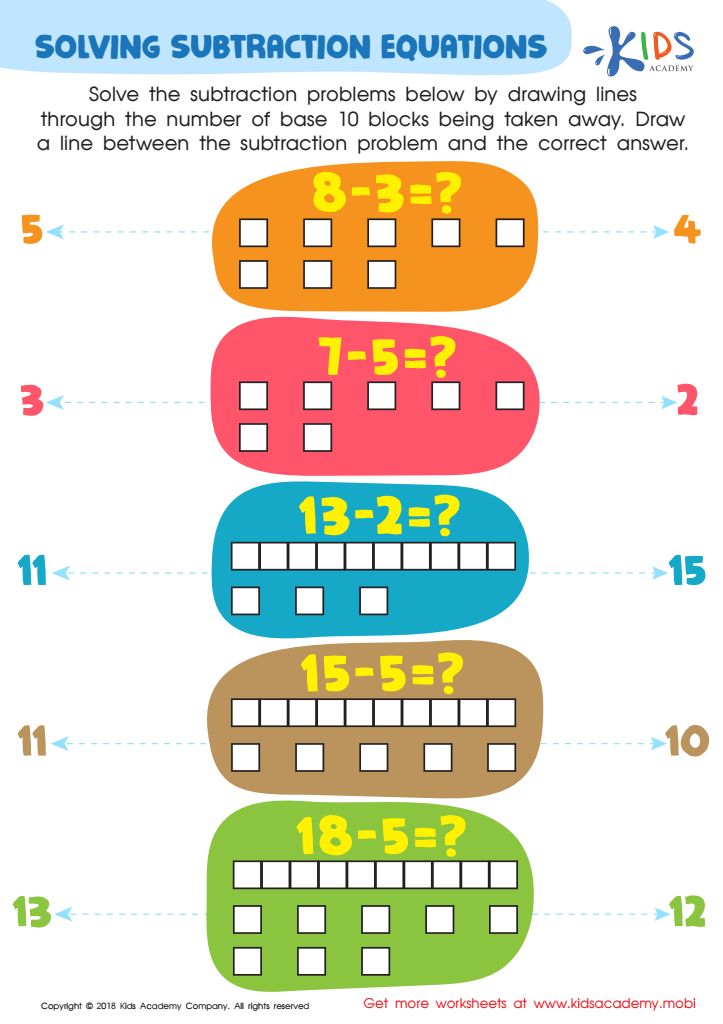

Solving Subtraction Equations Worksheet
Encourage your kids to engage their brains by completing this fun math worksheet! They'll soon realise that the subtraction problems aren't so daunting after all. Assist by drawing a line between each problem and the correct answer, using base 10 blocks to illustrate how many need to be taken away. Your kids will love the colourful printout and gain a better understanding of subtraction.
Solving Subtraction Equations Worksheet
Worksheet
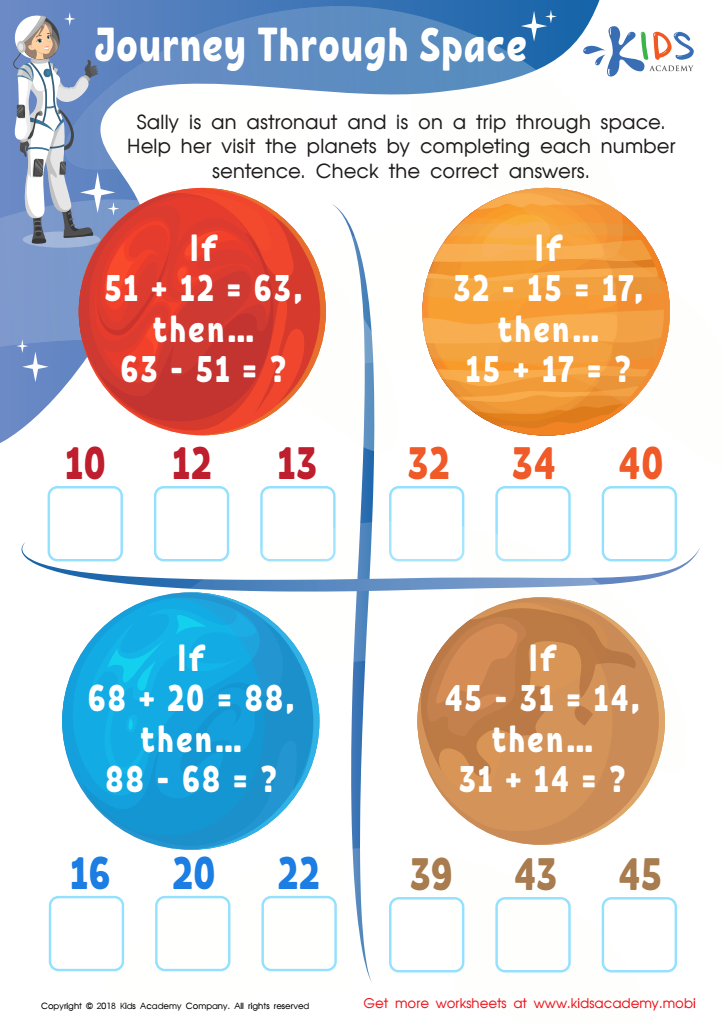

Journey Through Space Worksheet
Astronauts are essential explorers. They travel between Earth and other planets to gain knowledge of life in space. Being an astronaut requires strong math skills, so help your child develop them through this worksheet. Ask them to assist Sally on her journey to the planets by solving the number sentences in the picture. Verify the answers are correct.
Journey Through Space Worksheet
Worksheet
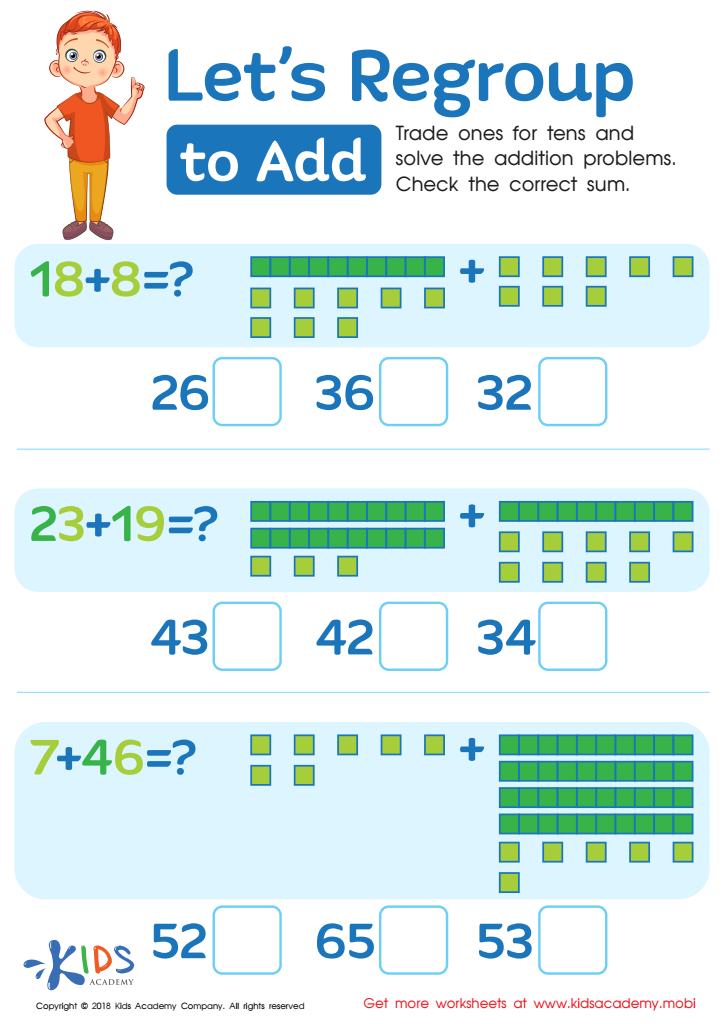

Let's Regroup to Add Worksheet
Practice regrouping and renaming numbers over ten with this worksheet. Using base ten blocks representations, students will turn single digits into '10s' and '1s', helping them to develop deeper mathematical reasoning, rather than just 'carrying the 1' when adding.
Let's Regroup to Add Worksheet
Worksheet
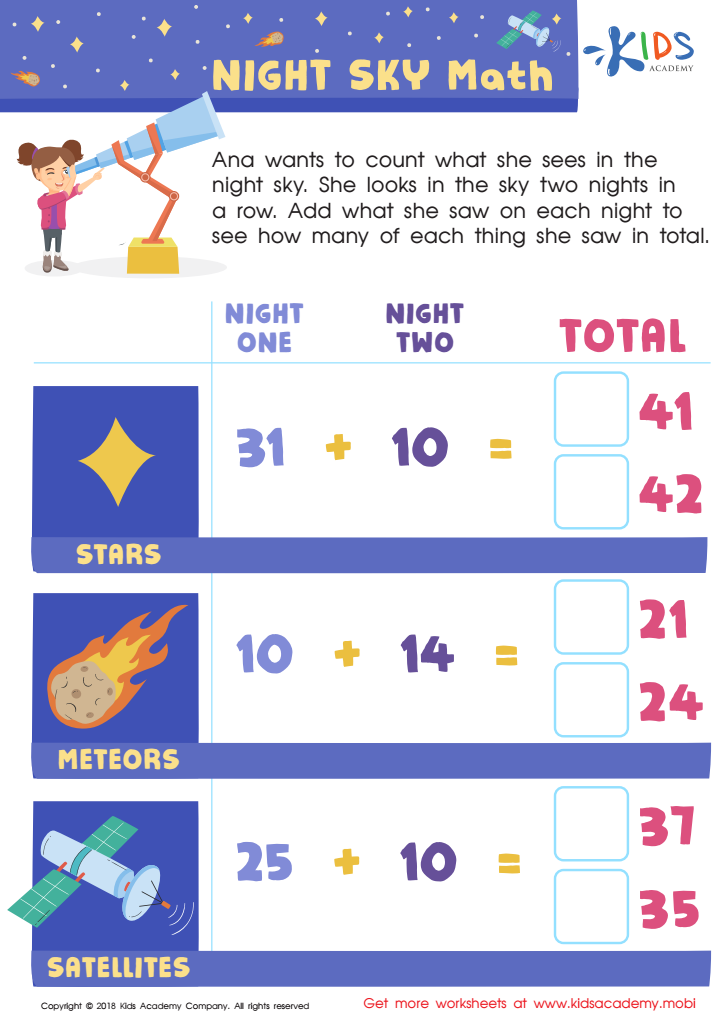

Night Sky Math Worksheet
Kids can use this colorful worksheet to learn math and addition while also exploring the night sky. Invite them to use a telescope to identify the things they see. Ask them to join Ana, the little girl in the worksheet, to count what she saw in two nights. Help them add the totals of each night to find out how many of each item she saw!
Night Sky Math Worksheet
Worksheet
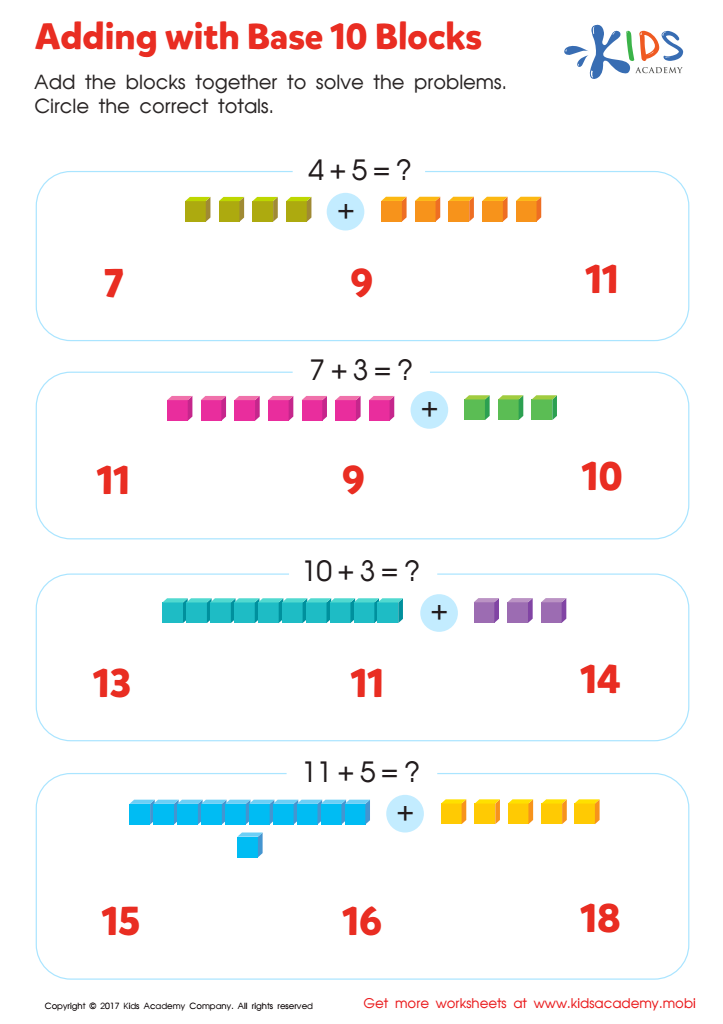

Adding with Base Ten Blocks Worksheet
Help your child work on their math skills with this fun worksheet! They must count the colorful boxes, add the figures together, then circle the correct total from the options given. Working through this printable sheet will help them learn in a fun and engaging way.
Adding with Base Ten Blocks Worksheet
Worksheet
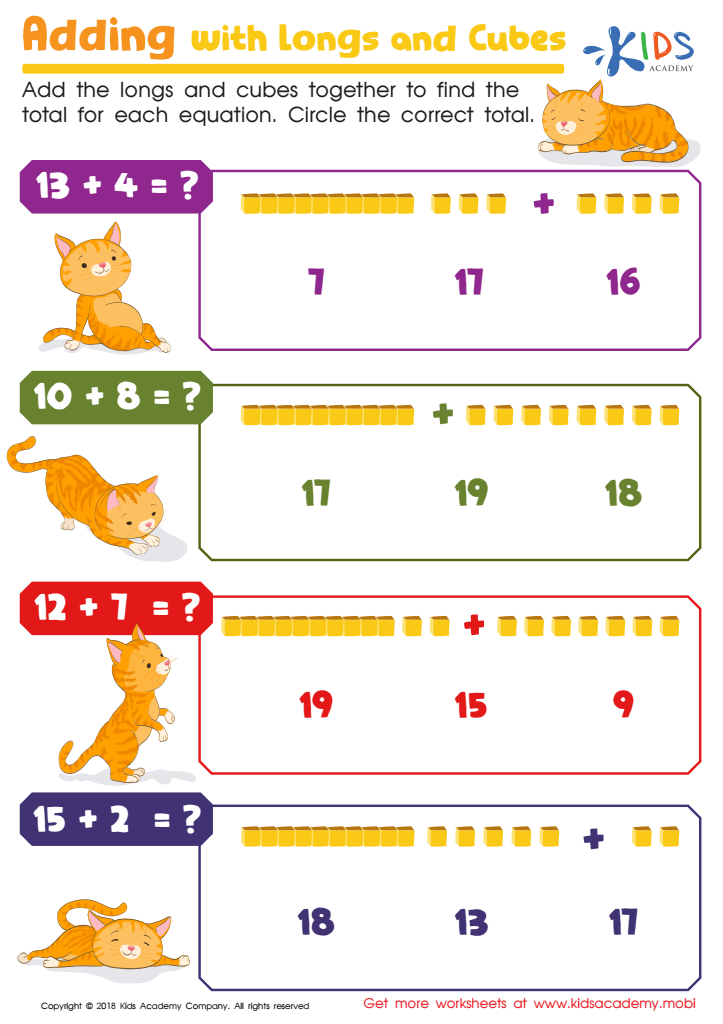

Adding With Longs and Cubes Worksheet
Math might not be your child's favorite, but they must master it to advance. If they're having difficulties or don't like it, use this worksheet to make it easier. Have them add longs and cubes together to find the total for each question, then circle the correct answer. This exercise can help make math experiences better.
Adding With Longs and Cubes Worksheet
Worksheet
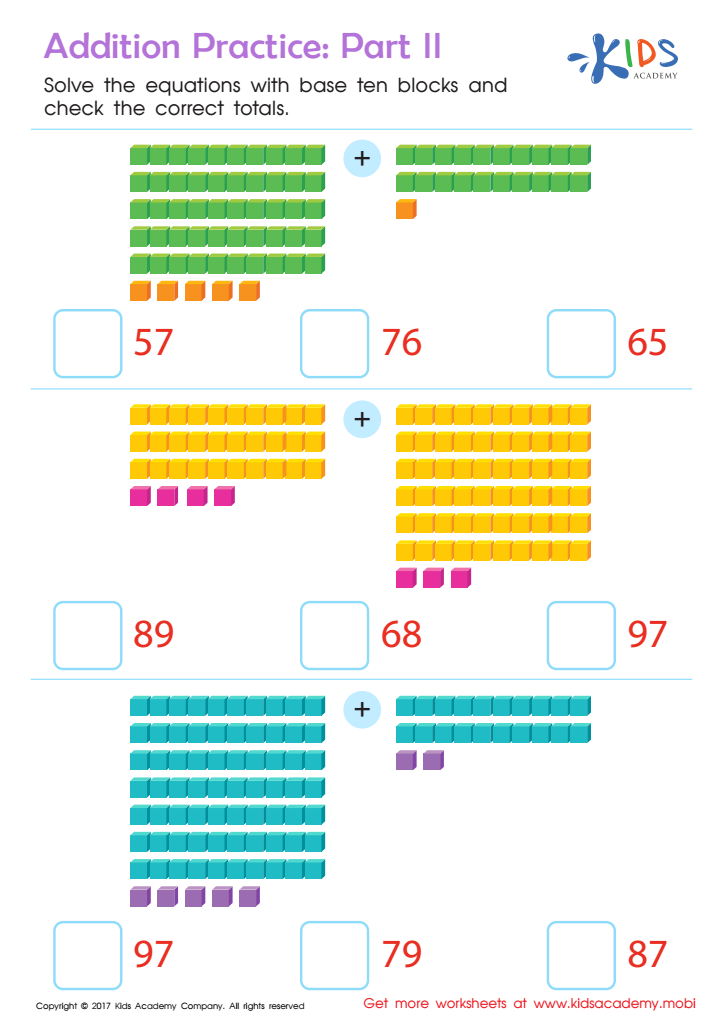

Addition Practice Sheet: Part 2
Make sure your kids understand place value before introducing two/three-digit addition. To help, use Kids Academy's colorful cube worksheet. It provides all the manipulatives needed to solve the problem and find totals. A great way to explain the concept behind the addition!
Addition Practice Sheet: Part 2
Worksheet
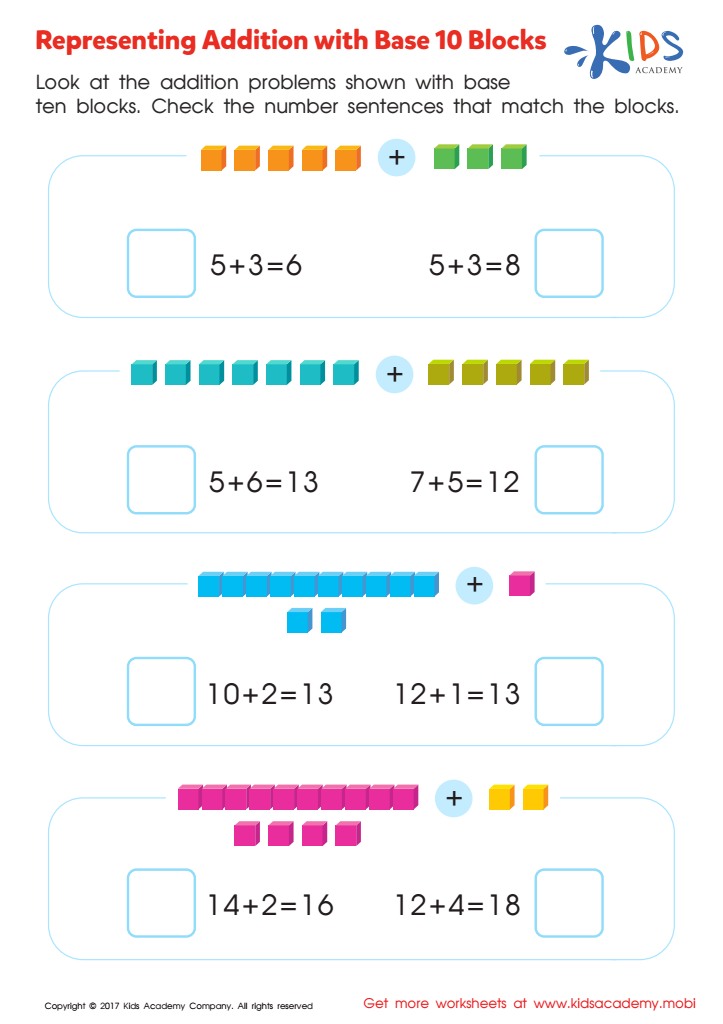

Representing Addition with Base 10 Blocks Worksheet
Solve addition problems with your little one: help them count the blocks, then select the correct equation from the choices. Circle the answer. Word play and math make a winning combo!
Representing Addition with Base 10 Blocks Worksheet
Worksheet
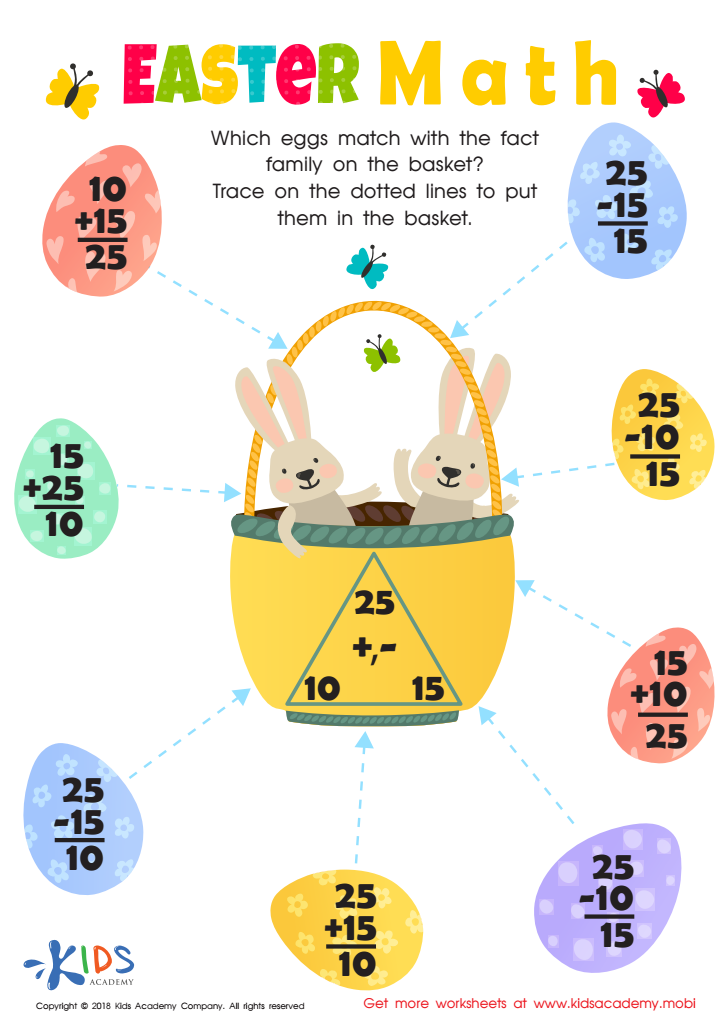

Fact Families: Easter Math Worksheet
Kids will love this vibrant PDF packed with Easter math fun! Match facts with the colorful eggs, add and subtract multiples of five to boost automaticity, and have a blast with the bunny friends!
Fact Families: Easter Math Worksheet
Worksheet
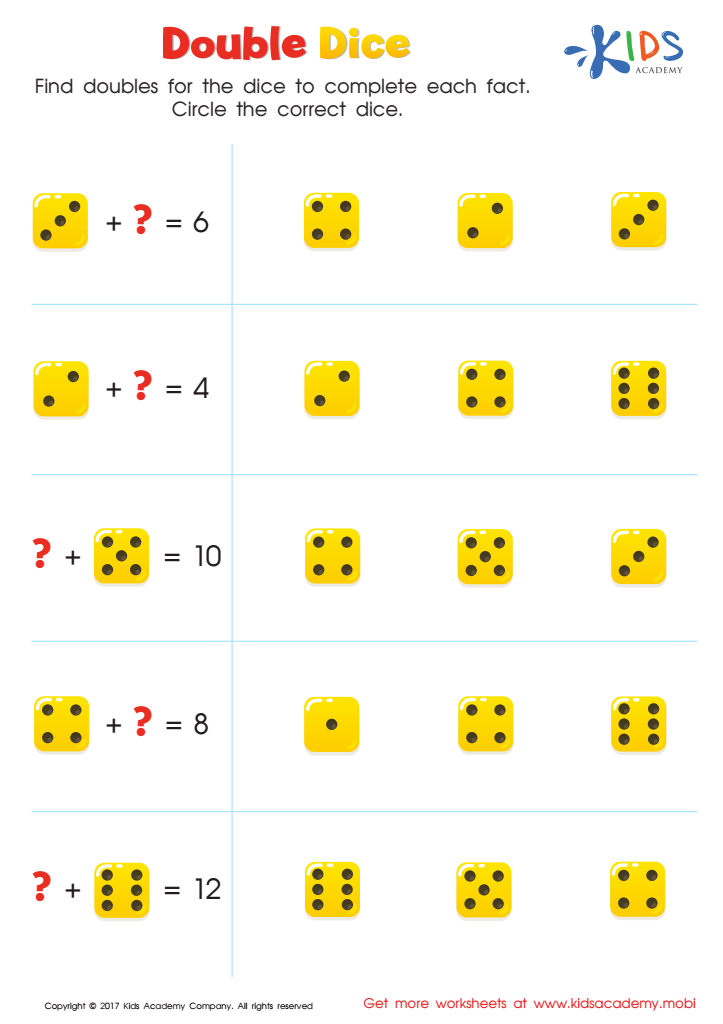

Addition Facts: Double Dice Worksheet
Are you looking for ways to make maths more engaging for kids? Maths can be a bore, but by teaching kids from an early age that it can be fun, they won't struggle with it. This worksheet is a great way to start: your child needs to identify the number on the left dice and find its double on the right. The sum of the two dice is also given.
Addition Facts: Double Dice Worksheet
Worksheet
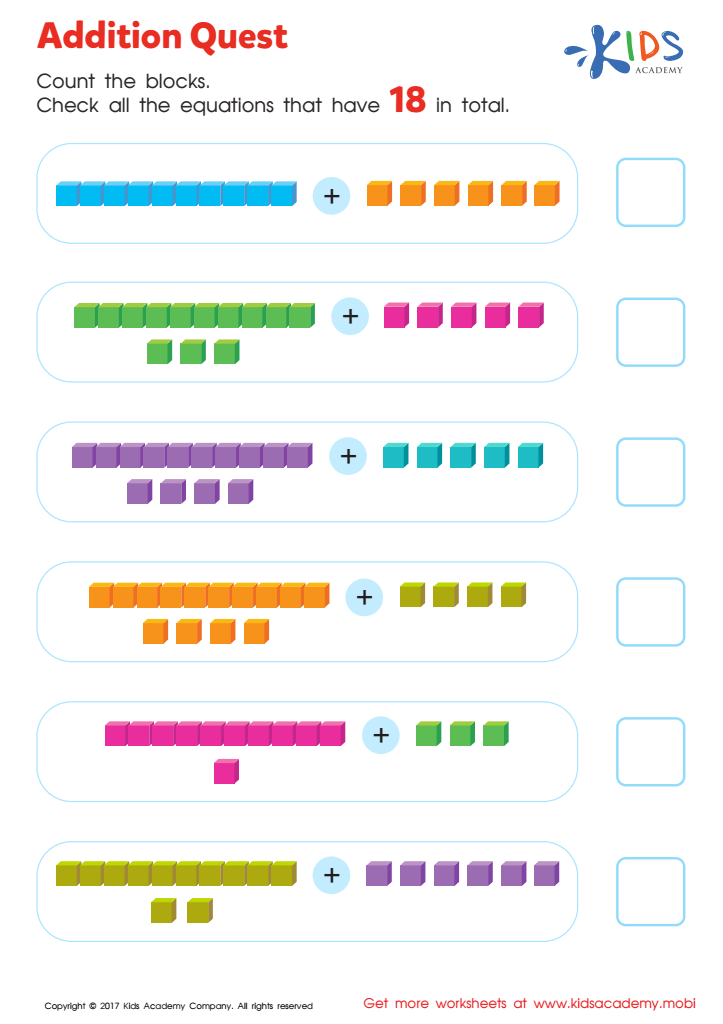

Addition Quest Worksheet: Part 2
Does your child or student struggle with math? Help them conquer their fears with this fun matching worksheet! It can help them learn to count and add numbers confidently. This colourful printout is sure to make math learning enjoyable, so they can easily work through the numbers and add up results with ease.
Addition Quest Worksheet: Part 2
Worksheet
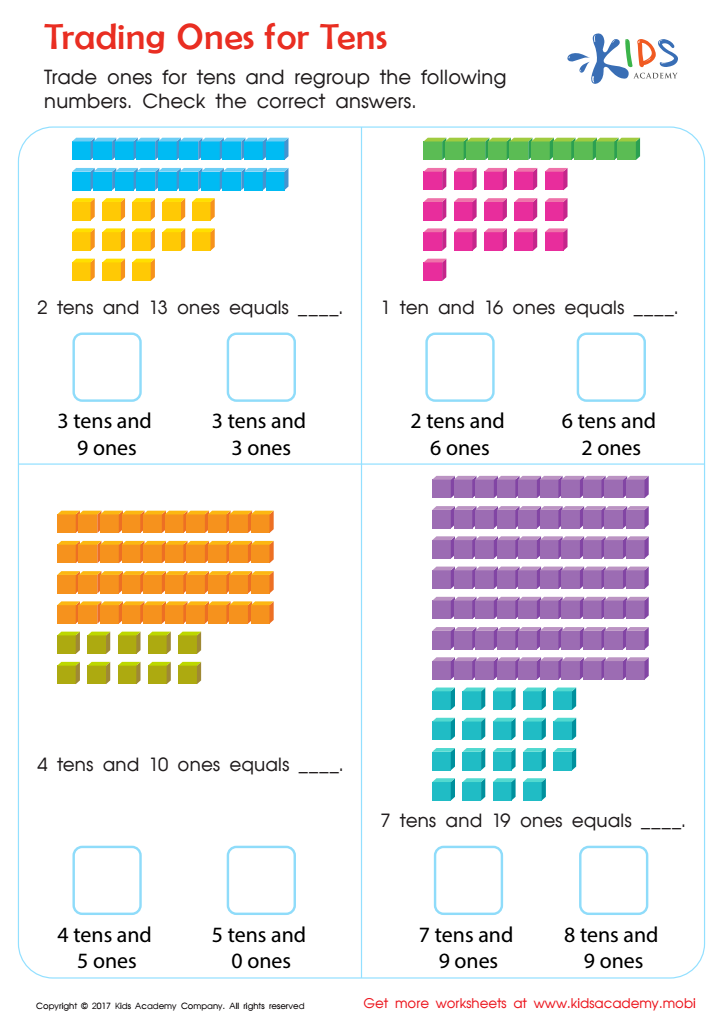

Trading Ones for Tens Worksheet
Kids Academy asserts that mastering place value is essential for developing math capabilities, like addition and subtraction. Using base ten blocks to regroup numbers aids kids in becoming numerate, plus it prepares them for further math operations. We have an illustrative worksheet that plus provides the cubes needed to understand the process of trading ones for tens.
Trading Ones for Tens Worksheet
Worksheet
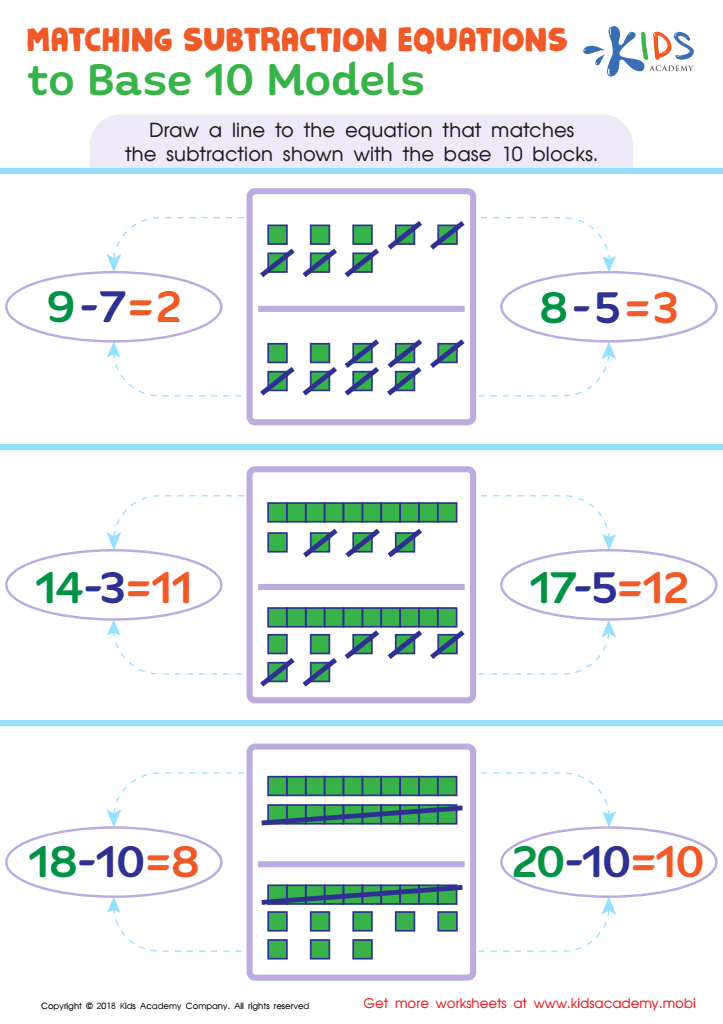

Matching Subtraction Equations To Base 10 Models Worksheet
Help your student draw a line to the equation that matches the subtraction shown with the base 10 blocks. Guide them through the task, ensuring they have good subtraction, counting and problem-solving skills. This tracing sheet is easy enough to complete with your support; the three mathematical problems here should be straightforward.
Matching Subtraction Equations To Base 10 Models Worksheet
Worksheet
 Assign to the classroom
Assign to the classroom


